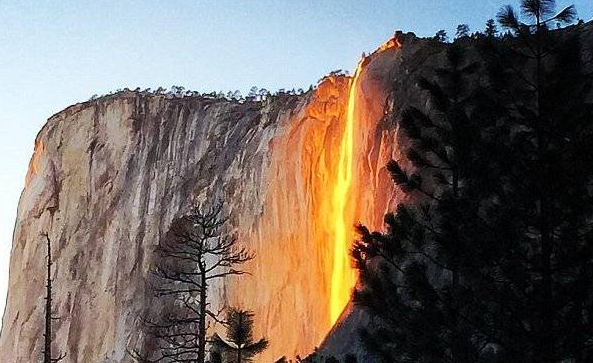Hari Sreenivasan: Once a year, California's Yosemite National Park plays host to an impressive trick of sunlight and water on the vertical rock formation known as El Capitan. But warmer weather this year led to disappointment. Christopher Booker has more.
Christopher Booker: For a few weeks each February, a natural spectacle draws thousands of people to California's Yosemite National Park. It's called Firefall. It only lasts for a few minutes at sunset when the winter light hits the park's towering Horsetail Falls. At just the right angle. But this year, there was no firefight. Patrick Gonzalez is a professor with the University of California, Berkeley. He says this year there wasn't enough water. The reason, climate change.
Patrick Gonzalez: The more snow that you have in the winter, the more water that you'll have coming over the falls. Our analysis show that total annual rainfall and snowfall has decreased across all of Yosemite National Park.

Christopher Booker: And Gonzalez says Firefall is not the only part of the park that's being impacted by climate change.
Patrick Gonzalez: Our analysis of climate data shows that human caused climate change has heated the park 1.1 degrees Celsius or 2 degrees Fahrenheit. That might not sound like a lot, but 1.1 degrees Celsius is the equivalent of pushing a mountain down a hundred and eighty meters or six hundred feet, more than the height of the Washington Monument, from cooler areas at high elevation to warmer areas below. In Yosemite and across the western U.S., human-caused climate change has doubled the area of wildfire burned, has doubled tree death, and has shifted trees upslope into meadows.
Christopher Booker: In recent years due to concerns over the ecological damage that come with large crowds gathering in Yosemite. The National Park Service has tried to limit the number of people who come to watch Firefall. But as the climate continues to change, such restrictions may no longer be necessary.













